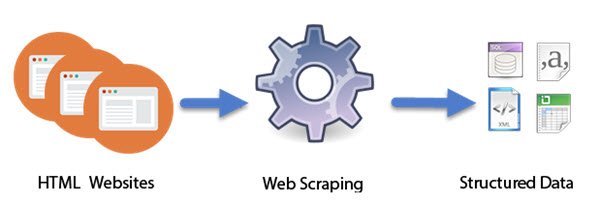Data and information are two terms often used interchangeably, but there’s a notable difference between them. For example, data refers to bits of information but not the information itself. On the other hand, Information is a set of data that is processed in a meaningful way. With the overwhelming data available on the internet, different approaches like Web Scraping, Web Harvesting, or Web Data Extraction are used to generate actionable and game-changing insights over the Internet use. But what exactly do they mean in the online world? Let’s take a look!
What is web scraping and data extraction?
Web scraping, or data extraction, is the automated process of collecting data from websites and saving it into files or databases. It helps users gather information for various purposes, like research or competitive analysis and is essential for creating large datasets efficiently.
How does Web Scraping work?

Computer programs designed as Intelligent bots do the work of Web Scraping. Unlike screen scraping, which only copies pixels displayed onscreen, web scraping extracts underlying HTML code and, with it, data stored in a database. The approach has become quite popular. In fact, it is considered as one of the essential skills to acquire in today’s digital world. It has some great applications in compiling large data sets, fundamental to techniques like-
With the rapid expansion of digital information, accessing Big Data via Web Scraping or Web Data Extraction has become much easier. Having said that, web scraping can be used by digital businesses that rely on data harvesting in both legitimate and illegitimate cases. The former includes Benign Web Scraping Examples, while the latter features Malicious Web Scraping examples.
What is web scraping what is used for?
Web scraping is the automated process of extracting data from websites. It is used for various purposes, including price monitoring, price intelligence, news monitoring, lead generation, and market research. Businesses and individuals use web scraping to leverage publicly available data for valuable insights and smarter decision-making.
Benevolent Web Scraping examples
- Search engine bots crawling a site, analyzing its content to assign a rank based on certain findings, like Google.
- Price comparison sites deploying bots to auto-fetch prices of products
- Market research companies using scrapers to extract data from social media (e.g., for sentiment analysis, personal preferences, etc).
Malicious Web Scraping examples
Web Scraping for illegal purposes can inflict severe financial losses if data is extracted without the permission of website owners. The two most common use cases of Malicious Web Scraping are price scraping and content theft.
- Price Scraping – Scraper bots inspect competing business databases to access pricing information, undercut rivals and boost sales.
- Content Theft – This illegitimate activity comprises large-scale content theft from a target website. Typical targets mainly include online product catalogs and websites relying on digital content to drive business.
I hope this helps!
Is data scraping and web scraping same?
No, data scraping and web scraping are not the same. Web scraping involves extracting data from websites using the internet, while data scraping can include collecting information from various sources, both online and offline. The main distinction is that web scraping specifically requires an internet connection.
What is the difference between ETL and web scraping?
The key difference between ETL and web scraping is that ETL involves extracting, transforming, and loading data into a data warehouse, while web scraping specifically extracts data from websites. ETL is a broader process used for data integration, whereas web scraping is a technique within the ETL process focused on web data.
Leave a Reply